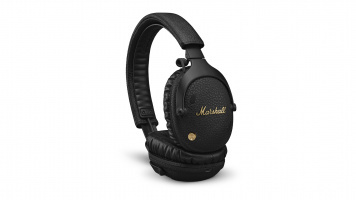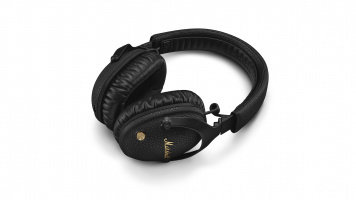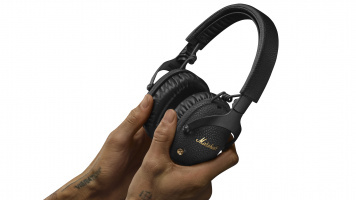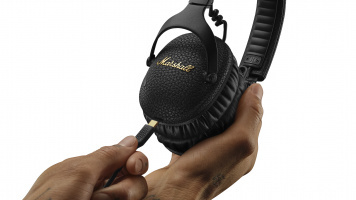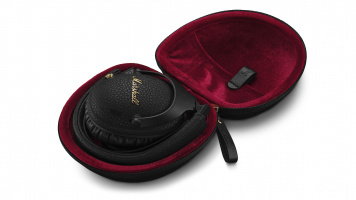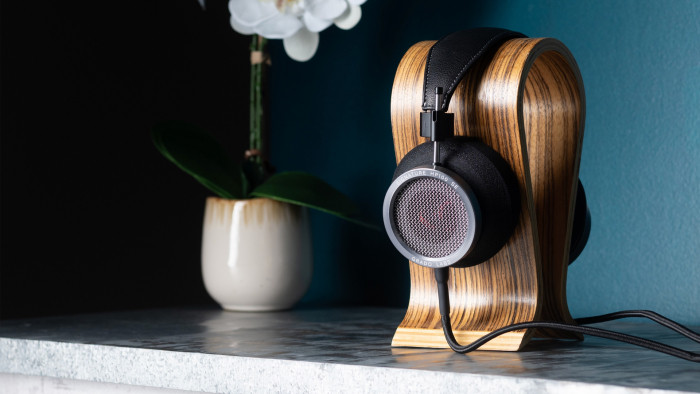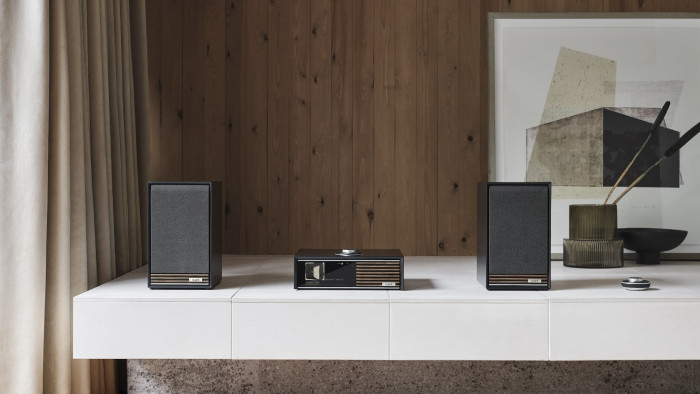Marshall Monitor III A.N.C review: 5 things you need to know
Do the latest Marshall over-ear headphones go all the way to 11?

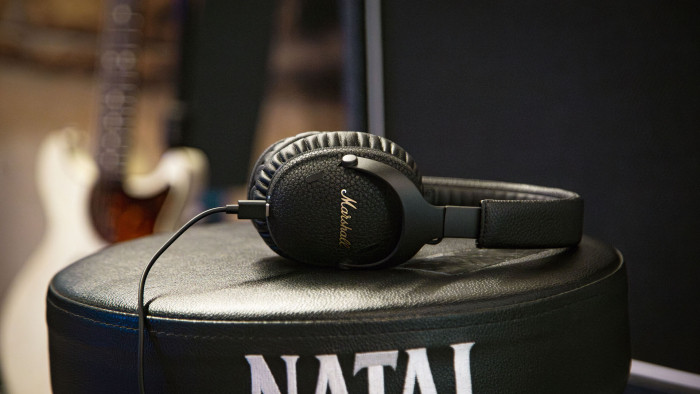
It’s mastered the stage, and now Marshall, once best known for its towering amplifier stacks, is taking another stab at serenading headphone buyers with its new Marshall Monitor III A.N.C over-ears. And it's a headliner-worthy performance from the cans.
ShortList should know as we were among a select few that have had a backstage pass with these headphones over the last week or so.
With an immediately distinctive design, incredible battery life and wonderful sound, the Marshall Monitor III A.N.C is a confident showing from the veteran brand — even if its spatial audio features need a little more tuning.
Available from September 24th and priced at £299, here’s everything you need to know...
1. A robust and rocking design
If you’ve ever been to a rock gig in the last 70 years, you’ve probably seen (and heard!) the iconic Marshall speaker stacks — black leatherette, cursive logo and plenty of gold trim. The Marshall Monitor III A.N.C, like Marshall’s previous personal audio devices, takes its cues from this design heritage.
Dome-shaped cans and headband each have that leatherette finish, with gold highlights provided by a Marshall logo over each ear and right-hand side control knob. It’s a different form factor and product, naturally, but it’s a dead-ringer for the amp design that’s made Marshall’s gear so instantly recognizable over the decades.
It’s comfortable, too. Soft padding over the spacious ear cups makes for a roomy fit, while the clamping force from the band is secure without feeling restrictive. At 250g, they don’t feel too heavy, while a dual-battery system (splitting the total battery capacity across a chamber in each cup) keeps that weight nicely balanced.
The band is particularly clever — it (along with the hinges of the cups) twist and flex with ease, helping prevent any unfortunate band snapping. It also lets the headphones fold up into a very compact shape, meaning that the included hard-shell carry case can be conveniently small.
The case itself is a lovely design too — almost egg shaped, with the same leatherette finish as the Monitor III A.N.C headphones, but with a red velvet lining like the inside of a guitar case.
2. Great audio
For those about to rock, the Marshall Monitor III A.N.C headphones offer a wonderful listening experience — and you’ll have a good time across a range of other genres, too. Punchy and well-balanced (if perhaps slightly warmer on the bass end of the scale), they’re a great listen no matter what your musical taste.
Kicking off on Marshall’s home turf with Guns ‘n’ Roses’ Nightrain, it effortlessly weaves the bluesy, duelling guitar lines across the stage, with the snap of Steven Adler’s snare punctuating the mix with real drive.
If pop’s more your bag, the Marshalls sparkle here, too. Dua Lipa’s Physical, with its brooding bass line and shimmering synth lines is given room to breathe, highlighting the raspy vocals and keeping bass and beat tight.
Delicate tracks like Phoebe Bridgers’ Moon Song prove real tear-jerkers in the Monitor III A.N.C, too. Distant hi-hats and waves of guitars dance around the songwriter’s trembling vocal, given real presence at the front of the mix to great effect.
The accompanying Marshall app also has an effective E.Q feature, letting you swap between the standard Marshall mix and one other preset or custom equaliser setting. It shows the real dynamism of the 32mm drivers, letting you adjust the output in great detail.
Marshall also includes an Adaptive Loudness option as part of the E.Q, which it says is able to tweak the frequency levels based on playback volume and your surroundings, but I didn’t find any situation where the difference between on and off was pronounced. It doesn’t affect the great baseline sound performance here though.

3. Crazy battery life with noise cancellation
Want to listen to your favorite tunes eight days a week, to paraphrase The Beatles? You might actually be able to manage that with the Marshall Monitor III A.N.C. Marshall quotes an incredible 70 hours of battery life for the headphones — and that’s with active noise cancellation set to on. Switch it off and that extends to an even crazier 100 hours. Compare that to 20 hours of noise cancellation with the AirPods Max or 30 hours from the Sony WH-1000XM5, and that’s even more impressive.
With a future-proofed Bluetooth LE standard supported by the Monitor III A.N.C, certain devices could potentially eke even more battery from more efficient standard. Charging is delivered over USB-C – you get a cable in the box (plus a handy USB-C-to-3.5mm cable for wired listening sessions).
The quoted battery life proved broadly true from our listening sessions, and what proved equally relieving was that the ANC was pretty darn good, too. Passive noise isolation is strong out of the box with the Marshall Monitor III A.N.C, but dial the noise cancelling up and you’ll effectively silence any external office noise, and drown out all but the screechiest train and tube journeys.
4. Customizable spatial sound and transparency modes
Soundstage is Marshall’s take on spatial audio, giving tracks a sense of space regardless of whether or not they’ve been mixed in a specific format. It’s an optional, toggled feature of the Monitor III A.N.C sound (available via the app), and you can tweak its prominence in the mix, as well as the size of the room it’s looking to emulate, from intimate to arena.
It’s harmless, and can add a sense of scale to the literal soundstage with some tracks, but can feel quite subtle, and not as convincing as a true spatial mix inevitably. But it’s fun to play with, and certainly isn’t destructive when it comes to the original intention of the artists.
There’s also a transparency mode that can be toggled on and off alongside the spatial and A.N.C modes. This pipes the outside world into your listening experience, giving you a better sense of your surroundings without having to remove the headphones.
It works fine, but I’d actually have liked it to have been a little more aggressive in pulling in the outside world — I missed a train station announcement, for instance, that I’d expect rival pairs to pick up. Hopefully this is something that can be dialled up by a firmware update.
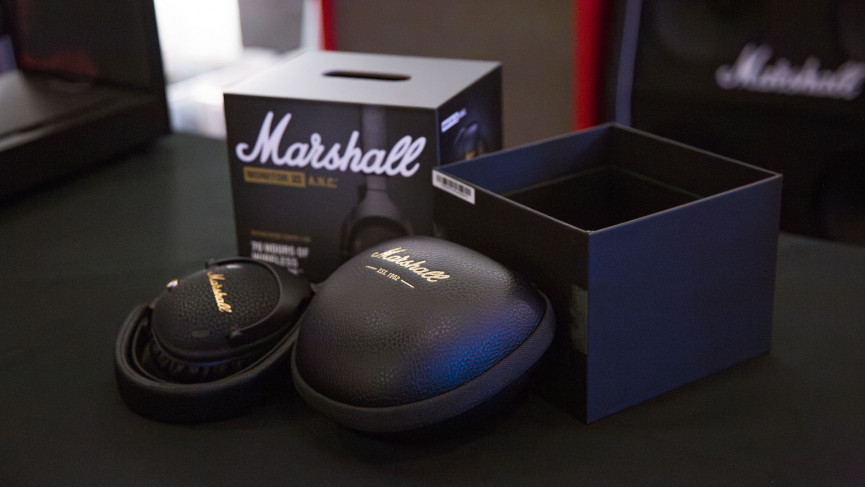
5. Physical controls all the way
Music to the ears of anyone that’s struggled with touch-sensitive swipes and taps on headphones, the Marshall Monitor III A.N.C’s onboard controls are all operated with tangible, physical buttons. The aforementioned gold-look control knob, neatly textured, sits on the lower back of the right ear cup and controls volume, fast forward, rewind, play, pause and call control.
Two other round buttons sit on the bottom parts of the cup cradles — interestingly, they’re placed at the back of the headphone, which makes them surprisingly easier to find and push with the clamping force of your thumb. The left button switches between noise cancelling modes, while the right button is Marshall’s customisable ‘M’ button. This can be set to cycle equaliser modes, Soundstage settings, fire up your mobile device’s voice assistant, or trigger Spotify Tap — a one-touch launcher for your last-played Spotify playlist or album.
The three buttons combine with an intuitive app to make controlling the Marshall cans very easy — though we’d like a little more defined, guided action on the control knob to ensure we’re pushing it in the right direction for the desired response.

Marshall Monitor III A.N.C: Final Verdict
Popping the Marshall Monitor III A.N.C over your mulleted head is as much a statement of intent as heading to the office in your favourite band t-shirt. It’s wearing your rock credentials on your noggin — but not at the expense of your tech and audio-savvy credentials. They lean on the pricey side, but justify the cost with a well-rounded sound, a solid feature set and great design. The Marshall Monitor III A.N.C will be the perfect bandmate for anyone on the hunt for noise-cancelling headphones.
- Rock out to our picks of the best rock albums of all time...
